Found a total of 10000 related content

Java reflection: dynamically obtain and print method name and return value
Article Introduction:This article will explore in-depth how to dynamically obtain and print the name of the method and its execution results through the Java reflection API without modifying existing classes and methods. We will explain in detail why direct calls cannot meet the needs and provide reflection-based solutions, including sample code, error handling, and considerations and performance considerations when using reflection.
2025-08-24
comment 0
137

How to create a private function in PHP?
Article Introduction:A private function is a method defined inside a class and can only be called by that class. In PHP, private functions can be created by using the private keyword, for example: classMyClass{privatefunctionmyPrivateMethod(){echo"Thisaprivatemethod.";}}; Private functions cannot be called directly through object instances, nor can they be inherited by subclasses; common uses include encapsulating internal logic, assisting public methods to complete tasks, and preventing mis-calls; the difference between access modifiers is that public can be called externally, protected allows classes and subclass calls, while private is only limited to
2025-07-07
comment 0
905
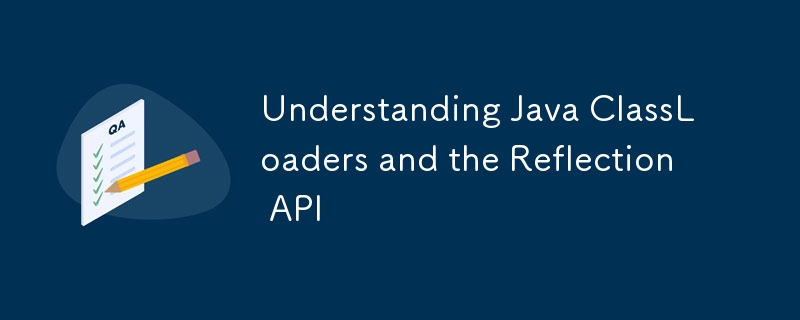
Understanding Java ClassLoaders and the Reflection API
Article Introduction:ClassLoader loading class, Reflection operation class; 1. ClassLoader loads classes according to the delegated model (Bootstrap→Platform→Application); 2. Reflection accesses private members through API reflections such as Class, Field, Method, etc.; 3. The two combine to realize dynamic loading and calling, which is common in frameworks and plug-in systems; attention should be paid to performance, security and memory leakage issues. Reasonable use can improve program flexibility and be summarized.
2025-08-04
comment 0
304

When Does __destruct Fail to Invoke?
Article Introduction:The __destruct method in PHP ensures resource cleanup before object termination. However, factors can prevent its execution: exit() calls in other destructors, exit() in shutdown functions (version-dependent), fatal errors, exceptions in destructors,
2024-10-23
comment 0
1024

Java reflection tutorial
Article Introduction:The Java reflection mechanism allows dynamic operation of class members at runtime, obtain class information through Class objects, call methods and access fields, and is suitable for framework development and other scenarios. Use reflection to get the Class object first. Common methods include class name, object and fully qualified name loading. Class.forName() is the most commonly used and supports class loading control. Then you can create objects and call methods dynamically, pay attention to parameter matching, private methods need to set setAccessible(true), and static method calls to pass null; field operations also need to obtain Field objects and set access permissions; reflection performance is low, and it is recommended to be used for initialization or cache use in high-frequency scenarios, which is commonly found in Spring and Hibernate.
2025-07-13
comment 0
685

How to override a method in Java
Article Introduction:Method overrides allow subclasses to provide concrete implementations of defined methods in parent class. 1. Use @Override annotation to ensure correct rewrite; 2. The subclass must inherit the parent class or implement the interface; 3. The rewrite method must have the same method name, parameter list, and return type (or covariant return type); 4. The access modifier cannot be stricter (such as public cannot become private); 5. Static, private and final methods cannot be rewritten; 6. The constructor cannot be rewritten, but the parent class constructor can be called through super(); finally polymorphic calls are implemented through object types, such as AnimalmyDog=newDog(); myDog.makeSound(); will output "Ba
2025-09-03
comment 0
155

Understanding the Java Virtual Machine Architecture
Article Introduction:The JVM architecture consists of three core cores: class loader, runtime data area and execution engine; the class loader is responsible for loading .class files, the runtime data area includes heap, stack, etc. for storing data, and the execution engine is responsible for interpreting or compiling bytecode; the heap stores object instances in the runtime data area, the method area saves class information, and stack management method calls; the class loading mechanism includes three stages: loading, linking, and initialization, and follows the parent delegation model to ensure security; mastering these basic structures helps troubleshoot problems and optimize performance.
2025-07-05
comment 0
197
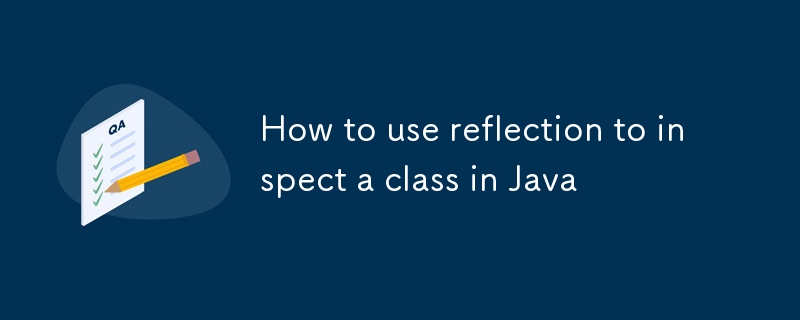
How to use reflection to inspect a class in Java
Article Introduction:To check Java classes using reflection, first get the Class object, and then analyze its members through the methods in the java.lang.reflect package; 1. Get the Class object can be loaded dynamically through .class syntax, getClass() method or Class.forName(); 2. Check class metadata such as class name, package name, modifier, parent class, etc.; 3. Use getDeclaredFields(), getDeclaredMethods() and getDeclaredConstructors() to obtain all fields, methods and constructors in the class, including private members; 4. Check through getAnnotations()
2025-08-19
comment 0
302
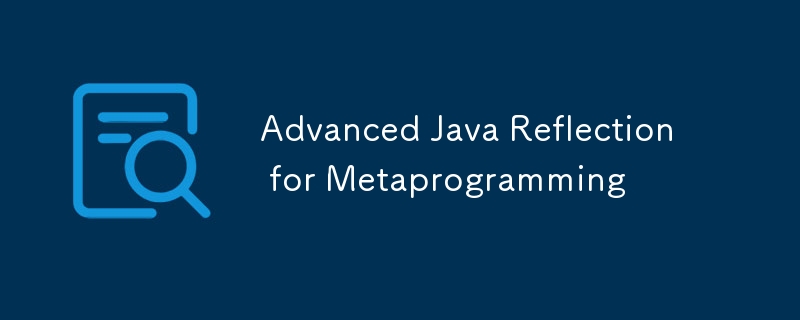
Advanced Java Reflection for Metaprogramming
Article Introduction:The reflection mechanism in Java plays a core role in metaprogramming. It uses Class.forName() to load the class, getMethod() to get method objects, and invoke() to dynamically call methods to achieve dynamic execution operations; uses JDK dynamic proxy and CGLIB to generate proxy classes at runtime to support AOP or Mock frameworks; uses getDeclaredField() to obtain fields and setAccessible(true) to modify private field values, which are suitable for testing or framework development; combined with annotation processors, code can be generated during the compilation period to improve performance and security. Although the reflection is strong, attention should be paid to performance overhead, exception handling and access control issues.
2025-07-25
comment 0
499

What are dynamic proxies in Java?
Article Introduction:Dynamic proxy is used in Java to create proxy objects that implement a specific interface at runtime. Its core is implemented through the java.lang.reflect.Proxy class and the InvocationHandler interface. The specific steps are: 1. Define the interface; 2. Create a real object to implement the interface; 3. Write an InvocationHandler to handle method calls; 4. JVM automatically generates proxy classes and intercepts method calls. Common application scenarios include logging, security checking, performance monitoring, and testing simulation. Dynamic proxy has problems such as only supporting interfaces (default), slight performance overhead caused by reflection, and increased debugging complexity. Example shows how to use LoggingHandler
2025-07-12
comment 0
405

Explain the difference between self::, parent::, and static:: in PHP OOP.
Article Introduction:In PHPOOP, self:: refers to the current class, parent:: refers to the parent class, static:: is used for late static binding. 1.self:: is used for static method and constant calls, but does not support late static binding. 2.parent:: is used for subclasses to call parent class methods, and private methods cannot be accessed. 3.static:: supports late static binding, suitable for inheritance and polymorphism, but may affect the readability of the code.
2025-04-09
comment 0
1419
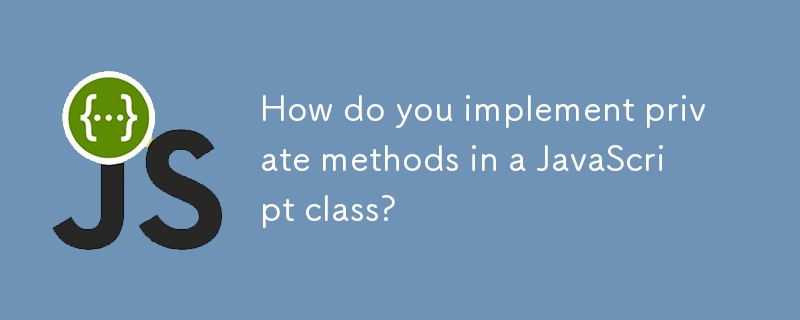
How do you implement private methods in a JavaScript class?
Article Introduction:In JavaScript, private methods are implemented by preceding the method name with # symbols, which is part of the ES2022 standard. 1. Use # prefix to define private methods, which can only be accessed inside the class, and external calls will report syntax errors; 2. Private methods cannot be enumerated and will not appear in Object.keys() or for...in loops; 3. Support static private methods, which can only be called through this inside the class; 4. Underscore naming (such as _method) is only a convention and is not truly private; 5. Closure or WeakMap was the way to simulate private methods in the old era, and is not recommended now; 6. The best practice is to use # syntax to ensure true privateness, such as #logTransact
2025-08-01
comment 0
883

How to perform reflection in Java?
Article Introduction:Reflection allows runtime checking and manipulating classes, methods, fields and constructors in Java. It is implemented through the java.lang.reflect package. You need to get the Class object first. 1. Use .class syntax, 2. Call the object's getClass() method, 3. Use Class.forName() to load the class dynamically; then you can get and call methods (including private methods that require setAccessible(true)), access and modify fields, and create instances (recommended getDeclaredConstructor().newInstance()); it is commonly used in frameworks such as Spring, Hibernate, serialization libraries and testing tools.
2025-08-03
comment 0
974

PHP anonymous class: Detailed explanation of constructor parameter passing and internal attribute initialization
Article Introduction:This article analyzes in detail how constructors in PHP anonymous class receive external parameters (such as $_POST data) and conditionally assign internal attributes to the class based on these parameters. Through the example code, we will explore in-depth parameters passing, __construct method execution process, and the application of switch statements in attribute initialization, helping developers master the core usage of anonymous classes.
2025-09-07
comment 0
325

Is __construct considered a php function?
Article Introduction:__construct is a constructor of a class in PHP, not a normal function, it is automatically executed when an object is created. It is used to initialize object properties or set dependencies, does not require manual calls, can accept parameters, and replaces the construction method of the same name class in PHP4. For example, classUser{publicfunction__construct(){echo"Usercreated!";}} automatically outputs information when creating an object. The difference between __construct and ordinary functions is that it is automatically executed, cannot be called manually, used for initialization, and has no return value. In addition, it can take parameters such as classProduct{private$na
2025-07-22
comment 0
901

How to get the name of the current function in PHP?
Article Introduction:There are three methods to obtain the current execution function name in PHP: 1.\_\_FUNCTION\_\_The name of the magic constant when returning the function definition is suitable for ordinary functions; 2.\_\_METHOD\_\_ is used to return "class name:: method name" in class methods, which can extract the method name through string processing; 3.debug\_backtrace() can dynamically obtain the call stack information to obtain the current execution function name but the performance is low, and it is recommended to be used in debugging scenarios. \_\_FUNCTION\_\_ and \_\_METHOD\_ are simpler and more efficient in their respective contexts and debug\_backtrace() provides a more flexible but heavier solution.
2025-07-06
comment 0
253

php get yesterday's date
Article Introduction:There are three ways to get yesterday's date in PHP: use the strtotime() function, combine the date() function to output detailed time, or use the DateTime class for flexible processing. The first method directly obtains yesterday's date through echodate('Y-m-d',strtotime('yesterday')); the second method can output the full time containing time, minutes and seconds, such as echodate('Y-m-dH:i:s',strtotime('yesterday')); the third method uses the object-oriented DateTime class to facilitate the execution of complex date operations, such as adding and subtracting days or setting time zones, with the code as $date=n
2025-07-04
comment 0
174

Using Traits in PHP 5.4
Article Introduction:Guide to using Traits in PHP 5.4
Core points
The Traits mechanism introduced in PHP 5.4 allows horizontal reuse of code between independent classes of inheritance hierarchy, solving the limitations of single inheritance and reducing code duplication.
A single class can use multiple Traits, and Traits can also be composed of other Traits, enabling a flexible and modular way of organizing code.
Use instead keyword to resolve conflicts between Traits with the same method name, or use the as keyword to create method alias.
Traits can access private properties or methods of a combined class, and vice versa, and even
2025-02-28
comment 0
539
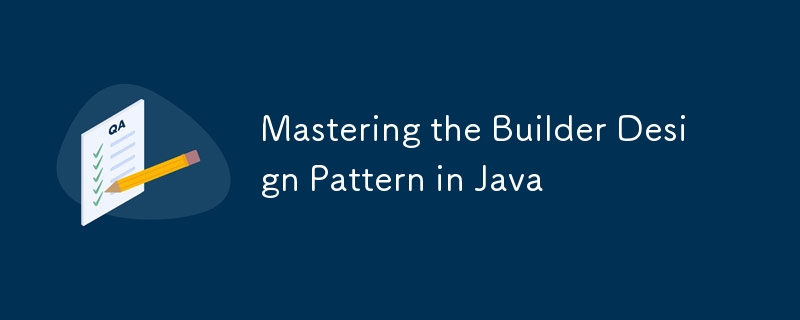
Mastering the Builder Design Pattern in Java
Article Introduction:The Builder mode solves the problem of too many construct parameters and mutability by building complex objects in step by step; 2. When implementing, set the class to final and initialize the fields through Builder in a private construct; 3. Create a static internal Builder class, and each setting method returns this to support chain calls; 4. Verify the required fields in build() to ensure object consistency; 5. Applicable to multiple parameters, especially objects with optional parameters, to improve readability and maintenance, and avoid telescoping constructors or destroying immutability setters.
2025-07-23
comment 0
621
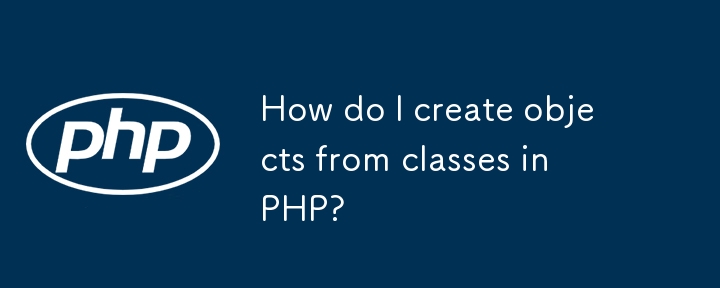
How do I create objects from classes in PHP?
Article Introduction:To create an object in PHP, you must first define the class and then instantiate it with the new keyword. 1. Classes are blueprints of objects, defining attributes and methods; 2. Create object instances using new; 3. Constructors are used to initialize different data; 4. Access attributes and methods through ->; 5. Pay attention to access control of public, private, and protected; 6. Multiple independent instances can be created, each maintaining its status. For example, after defining the Car class, newCar('red') creates an object and passes a parameter, $myCar->startEngine() calls the method, and each object does not affect each other. Mastering these helps build clearer, scalable applications.
2025-06-24
comment 0
879


















